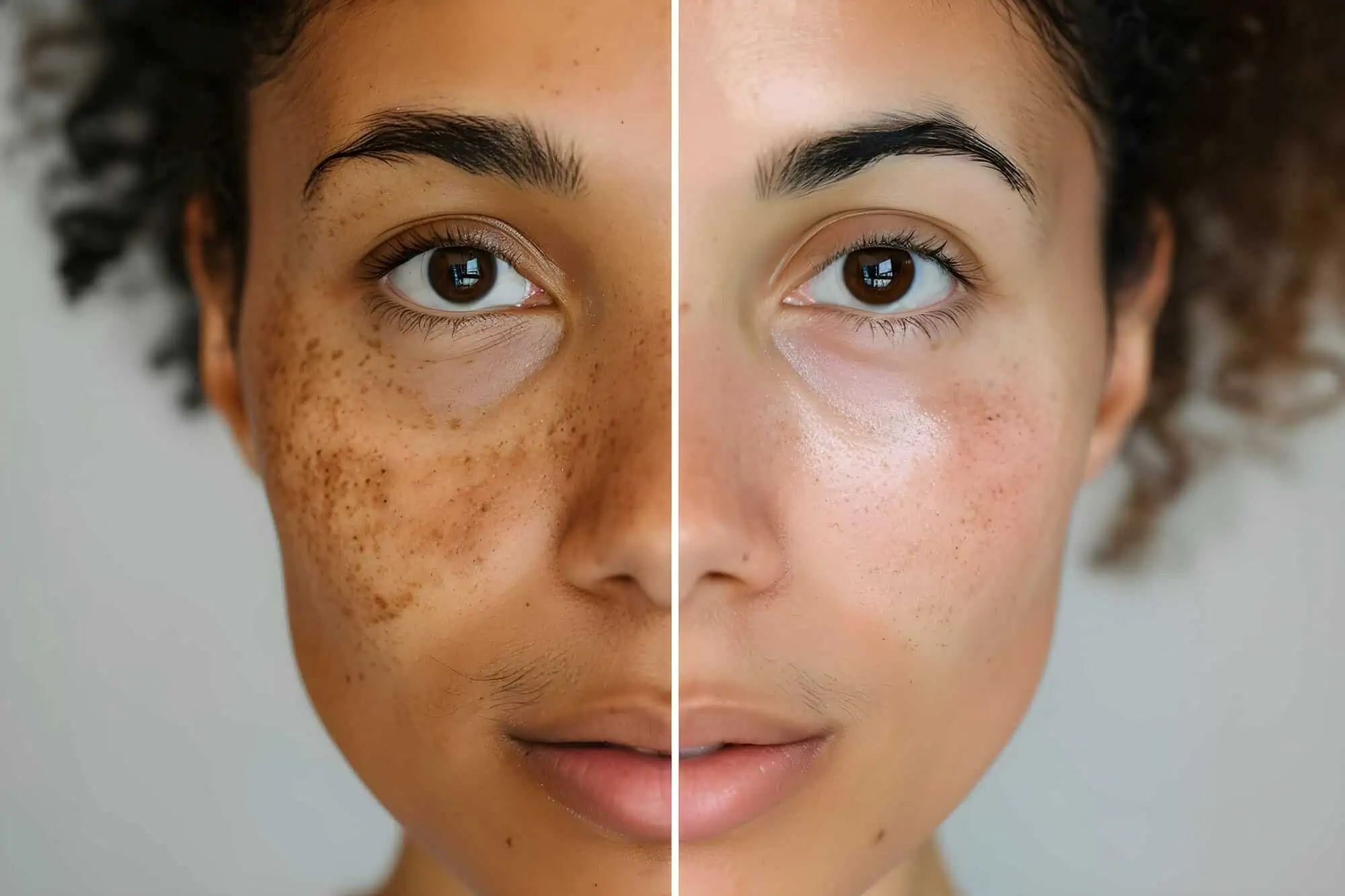Dark Spots Removal in New York, NY

Dark Spots Removal in New York, NY
Dark Spots, also known as hyperpigmentation, are areas of the skin that become darker than the surrounding skin due to an excess production of melanin, the pigment responsible for skin color. This condition can manifest as small patches, more extensive areas, or even affect the entire body. Dark spots are standard on the face, hands, shoulders, and arms. Various factors, including sun exposure, aging, hormonal changes, and skin injuries or inflammation, can cause them. While generally harmless, dark spots can cause cosmetic concerns for many individuals, leading them to seek treatment options to reduce or eliminate these areas of hyperpigmentation. Various treatments, such as chemical peels, laser therapy, microdermabrasion, and topical treatments, are available to address this condition effectively.
Causes and Variations of Dark Spots
Dark spots can be triggered by multiple factors, the most common being prolonged exposure to the sun, which stimulates melanin production as a protective response. Other causes include hormonal changes, particularly during pregnancy or due to birth control pills, which can lead to a type of dark spot called melasma. Post-inflammatory hyperpigmentation (PIH) is another variation, where dark spots appear following an injury or inflammation of the skin, such as acne. Age spots, also known as liver spots, are another variation typically occurring due to aging. Understanding the cause of dark spots is essential for choosing the most effective treatment.
What Are The Different Procedures for Treating Dark Spots
Chemical Peels
In chemical peels, the top layer of the skin is stripped away by a chemical solution, revealing softer, more pigmented skin beneath. This treatment is commonly used to reduce dark spots and can be customized based on the depth and severity of the pigmentation.
Laser Therapy
Concentrated beams of light are used to target and break down the excess melanin in dark spots using laser therapy. This non-invasive procedure is effective for treating a variety of pigmentation issues and can provide more rapid results than other treatments.
Microdermabrasion
The microdermabrasion technique is mechanical exfoliation that removes the outermost layer of dead skin cells. A good alternative for mild hyperpigmentation, this treatment promotes new skin growth in order to reduce the appearance of dark spots.
Topical Treatments
Topical treatments include creams, gels, or serums containing ingredients like hydroquinone, retinoids, or vitamin C. These treatments help lighten dark spots over time. They are usually applied daily and work gradually to reduce hyperpigmentation.
What Are the Results of Treating Dark Spots
Benefits of Treating Dark Spots
- Improves overall skin tone
- Reduces the visibility of pigmentation
- Boosts confidence and self-esteem
- Enhances skin texture and appearance
- Provides long-lasting results with proper care
- Can be tailored to individual skin types
- Non-invasive options available
- Reduces the need for heavy makeup
- It helps prevent further skin damage
- Safe and effective with minimal downtime
Frequently Asked Questions
Dark spots, also known as hyperpigmentation, form due to an excess of melanin production in certain areas of the skin. They are often triggered by sun exposure, aging, or hormonal changes.
While dark spots can be significantly reduced or eliminated with proper treatment, permanent removal depends on the cause and the individual’s skin type. Some places may require ongoing maintenance to prevent recurrence.
The success rate of dark spot treatments may vary from patient to patient, but most individuals see improvement within a few weeks or months.
Although side effects are minimal, they can include redness, irritation, or sensitivity, particularly with treatments like chemical peels or laser therapy. It’s important to follow aftercare instructions to minimize these effects.
Laser therapy and chemical peels are often considered the most effective treatments for dark spots caused by sun damage, as they target the deeper layers of the skin where sun-induced pigmentation resides.
Regular use of sunscreen, avoiding excessive sun exposure, and following a skincare routine that includes brightening and protective products are important to prevent dark spots from returning.
